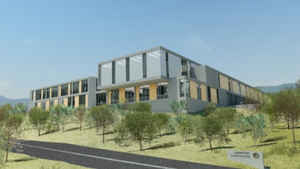California Counties
The state of California is divided into fifty-eight counties. On January 4, 1850, the California constitutional committee recommended the formation of 18 counties. They were Benicia, Butte, Fremont, Los Angeles, Mariposa, Monterey, Mount Diablo, Oro, Redding, Sacramento, San Diego, San Francisco, San Joaquin, San Jose, San Luis Obispo, Santa Barbara, Sonoma, and Sutter. The last California county to have been established is Imperial County in 1907.Lake County, California
Lake County Education, Geography, and History

Lake County is a county located in the north central portion of the state of California. Based on the 2010 census, the
population was
64,665. The county seat is Lakeport.
Lake county was created on May 20, 186. The county
is named for Clear Lake, the main geographic feature in the county and the
largest natural lake wholly within California (Lake Tahoe is partially in Nevada; Salton Sea was accidentally flooded).
Lake County forms the Clearlake, CA Micropolitan Statistical Area. It is directly north of the San Francisco Bay Area.
Etymology - Origin of Lake County Name
Lake county was created in 1861, from territory formerly included in Napa County. This county derived its name because of the many charming lakes in the area, most prominently Clear Lake.
Demographics:
County QuickFacts: CensusBureau Quick Facts
Lake County History
Clear Lake, the 43,000-acre center of Lake County, is the largest natural lake in California; it may very well be the
oldest lake in North America as scientific evidence has proven the lake to be at least 150,000 years old. The area took
shape from volcanic action; Clear Lake's current form was created by a landslide thousands of years age which blocked
the broad valley's drainage west into the Russian River. The water rose until it found a new outlet, Cache Creek, which
drains eastward into the Sacramento River.
Four thousand years before the rise of the Egyptian civilization, the Pomo Indians were
fishing and hunting and collecting
plant foods on the shores of Clear Lake. The lake produced a great quantity of fish, as well as tule reeds from which they
made dwellings, boats, clothing and household items. Today, Pomo baskets are widely
well-liked throughout the West.
In the 1850's the first European families found their way to Lake County; the first of these settlers lived near what is
now Kelseyville. Ranching and farming grew fast and toll roads began climbing over the mountains in the 1860's,
bringing settlers in increasing numbers. The Pomo were gradually forced from their traditional homes to rancherias.
Natural mineral springs became hugely popular, drawing hundreds of thousands of visitors from around the globe to
"take the waters." Enormous resort complexes were built, and enjoying wide fame were Bartlett Springs, Soda Bay Springs, Seigler Springs, Anderson and Adams Springs. Many of these grand resorts were destroyed by fire, and most were not
rebuilt.
Not having roads along the perimeter of Clear Lake, steamers plied the waters connecting visitors to resorts across the
lake. Steam boats, and then gas powered boats, became a favored means of transportation and recreation.
Automobiles gradually superseded boats, and it was several decades later that boats regained popularity. Today residents
and visitors enjoy canoes, sailboats, fishing boats, speedboats, pontoon boats, and even oarless boat races on the many
lakes of Lake County.
Agriculture has continued its role as a mainstay. Lake County's Bartlett pears,
wines and walnuts enjoy wide
recognition. Kiwifruit and wild rice are products less significant.
In the twenty-first century, Lake County begins a renaissance reminiscent of her former glory as "playground" to the Bay
Area.
Geography: Land and Water
As reported by the Census Bureau, the county has a total area of 1,329 square miles (3,443 km2),
of which, 1,258 square miles (3,258 km2) of it is land and 72 square miles (185 km2) of it (5.38%) is
water.
Neighboring Counties
Bordering counties are as follows:
- Northeast: Glenn County
- East: Colusa County
- Southeast: Yolo County; Napa County
- South: Sonoma County
- Northwest: Mendocino County
Education







